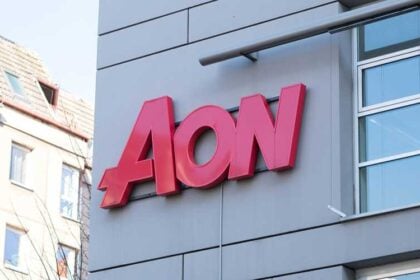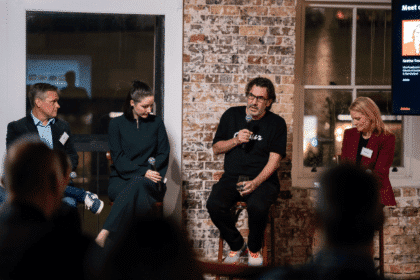In this Campaigns of the Month column, we run the rule over February ads for Telstra, McDonald’s and GWM.
Our friends at System1 have tested the ads with punters. B&T has called on Cocogun co-founder and creative partner Ant Melder and Born co-founder and creative director Jenny Lennon to cast their expert eyes over the work, created by Thinkerbell, DDB Sydney and Telstra’s +61 (Bear Meets Eagle on Fire and TBWA).
You can find B&T’s Campaign of the Month columns here.
GWM, ‘Chuck More In’, by Thinkerbell
System1 Report
GWM Cannon effectively promotes its latest model by blending humour with cultural nuances, creating a light-hearted and relatable scenario. Many respondents highlighted this approach as a key driver of positive emotional response, aligning with Orlando Wood’s research on humour’s role in fostering long-term commercial impact (Lemon and Look Out). While the ad successfully builds emotional resonance, there is an opportunity to strengthen branding. With “Ute” being a generic term, only 55% of respondents identified GWM as the brand, suggesting a risk of weak brand attribution, especially as logos and branding appear only in the final moments.
What creatives said:
Ant Melder (AM), co-founder and creative partner, Cocogun: Big Ad. Canoe. Super In, Super Out. The Regulars. Once upon a time, the hilarious and epic Aussie beer ad (HEABD) was a thing. Sadly, it feels like the last decade or so has seen the gradual demise of this much-loved, globally-renowned genre. Tragically replaced by boring product stories, corporate fluff, jokes that don’t land and forgettable guff. Having said that, it’s heartwarming to see little traces of HEABD (an acronym makes it scientific and official, right?) pop up here and there in other categories. I’m pleased to report that this one’s got a touch of that DNA. It’s not in the same league as those brilliant beer ad bangers, but it has some of the ingredients, and it’s an engaging story built around the key product point, while making me smile.
The main guy is a great blend of relatable and funny, and the casting/performances throughout don’t feel too addy. Plus, I love a catchphrase, and the way they’ve utilised “Chuck it in the ute” feels smart and iconic. I hope they do more with that. This isn’t a Grand Prix-winning, side-splitting, life-changing piece of work, but it’s a fun, entertaining step in the right direction that works hard to flog utes and is genuinely worthy of 45 seconds of people’s time.
Jenny Lennon (JL), co-founder and creative director, Born: This definitely hits the mark. They’ve really connected with the Aussie spirit. By embracing the classic phrase of “chuck it in the ute,” they’ve not only tapped into Aussie vernacular but developed its meaning to showcase the product’s key selling point. Nice. The ad brilliantly (and comically) illustrates that this ute isn’t just about hauling heavy loads; it’s about transporting life’s precious moments from moving furniture to transporting your wedding cake, this ute can handle it all. It really is great storytelling. The scenarios are authentic, the humour is well-placed, and the Cannon itself takes centre stage without overshadowing the narrative. It’s refreshing to see an ad that understands its audience and delivers a message that’s both entertaining and genuine. Kudos to the creative team.
McDonald’s, ‘McSmart’, by DDB Sydney
System1 Report
Tailing GWM in emotional resonance but proving to be the most successful ad of the month for short-term sales potential and strong branding is McDonald’s with its McSmart Meal. The ad’s low price point and vibrant aesthetics contribute to its positive appeal, with the price introduction being the peak moment of happiness throughout the ad journey. Nicely skewed toward right-brained features such as expressive characters and a hummable tune, the ad achieves a strong Star Rating. However, a slower pace and reduced voiceover could enhance its long-term effectiveness, further strengthening brand-building alongside its exceptional short-term sales impact.
What creatives said:
AM: In the interests of full disclosure and transparency, I have to admit a strong personal bias on this one. As a passionate vegetarian of decades-long standing, the world of meat-based burgers is against my personal religion. But putting aside my chickpea-worshipping ways for a moment, and looking at this purely as a piece of communication, it’s fabulous. The craft? I’m lovin’ it. The world-building, art direction, photography, set design, music and casting have clearly all been pored over and lovingly crafted, waaaay beyond your average bog standard product ad. To create something that feels fresh, fun and contemporary. I just wish they were spruiking Impossible burgers.
JL: While the art direction is like a nice fresh crispy chip, the script feels more like a leftover burger, way too familiar and lacking any sizzle. This is a textbook example of an ad lacking story whilst playing it way too safe. It aims to ignite fan passion by “picking a side” but it incites as much excitement as a soggy fry. Not sure what the insight was here. The market is saturated with fast-food options, so standing out really does require some special sauce; a story we can get behind. This campaign, unfortunately, retreats into the zone of mediocrity. It’s not just a missed opportunity; it’s a reminder that playing it too safe can be the riskiest move of all. On the flip side, the styling and art direction is really well executed, and where can I get one of those cheeseburger shirts?
Telstra, Beautiful Internet, by +61
System1 Report
Despite its modest scoring compared to McDonald’s and GWM, Telstra notably outperforms its category, which typically sits in the low 2-Star range. As a broadband provider, Telstra does not benefit from the inherent appeal of delicious meals or cool cars, making it more challenging to drive emotional engagement. However, the ad resonates with many respondents, who appreciated its calming allure and the satisfying narrative of the dominoes falling.
To enhance the campaign, Telstra should consider reducing the overall length to maintain consumer engagement while incorporating a stronger human element. A clear sense of place, expressive characters, and an uplifting soundtrack are all proven features that capture attention and drive positive responses. Another key area for improvement is branding, which currently limits short-term sales impact. Stronger, bolder, and earlier branding would keep the brand top of mind throughout, increasing memorability and recall.
What creatives said:
AM: Every time we turn on the telly to watch White Lotus, go on YouTube to check out music videos, or fire up social media to see what funny things our friends’ kids have done/said lately, we’re assaulted by ads. Screaming, chaotic, over-loaded comms jabbing their uninvited fingers into our faces and giving us 25 reasons we need to BUY NOW TODAY. Ugh. The way I see it, this whole business is a value exchange. In return for taking up people’s valuable time and headspace, we do our level best to give them something worthwhile or useful. By entertaining them, informing them, making them laugh, making them feel something other than existential frustration at the grim shoutiness of modern capitalism. Telstra clearly understand this more than most, and this piece demonstrates that even the most modest of product ads can be both simple and beautiful. Instead of a tired storyline about a connected family all using the internet for their stereotypical, demographic-specific purposes, it’s a visually compelling feast of a metaphor with a calm, confident vibe that brings the blood pressure down rather than up. Nice. My only two small beefs are:
- This has been so neatly and painstakingly executed, it looks almost AI-generated. Which it’s not. I would’ve liked a few more touches of humanity in there.
- I’m well jel that the agency got to work with Dan Tobin Smith. Been a fan for yonks, since he shot that classic Jay Z album cover. Sadly he’s never made it beyond the reference slides in my decks. I’m sure he’ll be devastated to hear that 🤣
JL: Wait, they actually laid out 20,000 custom-made dominoes? Seriously impressive (genuinely), especially in today’s world where CGI is often the go-to. This ad really is a visual symphony that turns the mundane into something magnificent, and you have to admire the real-world artistry that is both refreshing and commendable. The brand colours really sing: big tick to effective brand marketing.
But, if I’m being totally honest, when it comes to the concept, there is a sense of déjà vu here. The ad instantly recalled memories of Honda’s iconic “Cog” commercial, with its intricate chain reactions symbolising precision engineering. While Telstra’s version is certainly captivating, I might argue it’s a little “done”? Haven’t we seen enough of these chain-reaction style ads? That said, in a sea of predictable tech ads, Telstra’s domino display doesn’t fall in line, it does stand out. Plus it was incredibly satisfying to watch – an ASMR-lover’s dream.














